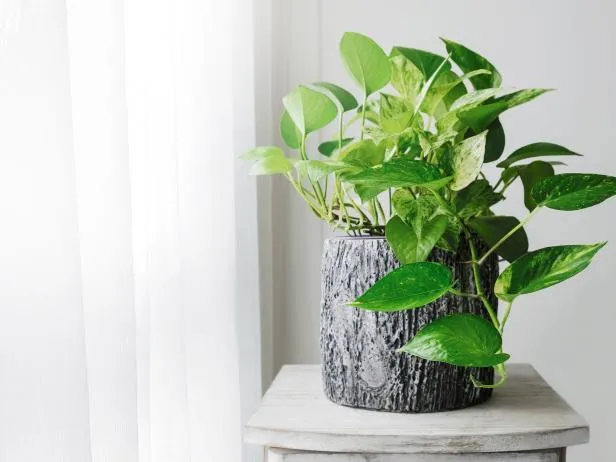A Comprehensive Guide to Caring for Your Ivy Plant
If you’re looking for advice on how to properly care for your ivy plant, you’ve come to the right place. As an avid gardener, I’ve grown many varieties of ivy over the years and learned a few tricks along the way. In this in-depth guide, I’ll cover all the basics of ivy care as well as some tips and tricks I’ve picked up from experience to help your ivy thrive. By the end, you’ll have all the knowledge you need to successfully care for your ivy for many years to come.
Choosing the Right Variety
The first step is selecting an ivy variety suited to your growing conditions and preferences. There are several common types of indoor ivy plants to choose from:
- English ivy: One of the hardiest varieties that does well in low or bright light. A popular classic choice.
- Needlepoint ivy: Has delicate round leaves and tolerates low light. A good option for shadier spots.
- Swedish ivy: Heart-shaped leaves that grow well in medium light. More compact than English ivy.
- Creeping fig: Also called climbing fig. Features lush green leaves and vines thoroughly. Prefers bright light.
Consider where you’ll keep the plant and assess your available light before deciding. English or needlepoint ivy make great starters for lower-light areas.
Pot and Soil Requirements
Ivies thrive in well-draining potting mixes. Use a pot with drainage holes that’s only 2-4 inches larger than the root ball. Repot only when roots start growing out the drainage holes. Potting soil should contain compost or coir to retain moisture without becoming soggy. Perlite is also useful for additional drainage.
Watering Needs
From my experience, under-watering is more common than over-watering when caring for ivy. The soil should be allowed to dry out slightly between waterings, but not completely. Stick your finger an inch into the soil to check moisture levels. When the top soil becomes dry, it’s time to water thoroughly until water drains freely from the bottom.
During warmer months when growth is active, water every 5-7 days. In winter when the plant is dormant, cut back to every 2-3 weeks. Too little water causes leaf drop, while over-watering can lead to root rot. Finding the right balance takes practice but will reward you with a beautiful, thriving ivy.

Light and Placement
Ivy needs bright, indirect sunlight to grow well and stay compact. Direct morning or late afternoon sun is fine, but intensity should be moderate to prevent leaf burn. Too little light causes leggy, sparse growth.
Great spots include eastern or western windows, under a skylight, or a few feet back from a south-facing window with sheers or curtains. Avoid dark corners and you should have success. I find my ivy thrives near a north-facing kitchen window that gets great diffuse light all day.
Fertilizing
During the spring and summer growing seasons, apply a balanced liquid houseplant fertilizer every 4-6 weeks. Dilute it to half or quarter strength according to package instructions. Too much fertilizer can damage roots. In fall and winter when growth slows, you can reduce fertilizing or skip it entirely if leaves remain healthy.
Pruning and Training
Ivy grows quite vigorously and may need occasional pruning and training to maintain a compact shape. Remove leggy growth to encourage bushy new growth. Cut 4-6 inches above a set of healthy leaves and nodes. Use pruners sterilized with rubbing alcohol.
You can also trim ivy to trail or climb. Affix stems to poles, trellises, or walls using twist ties or twine to create a lush hanging effect. Over time it will adhere and collapse naturally. With pruning and training, ivy can be sculpted into many beautiful forms.
Pests and Problems
Spider mites are the most prevalent pest for ivy. Check leaves for tiny webs or dots and remove affected growth if spotted. Quarantine if severe. Aphids may cluster on new growth – spray with insecticidal soap. Mealybugs sometimes show as fluffy spots – swab with alcohol on a cotton ball. Proper care and removing pests promptly is key to prevention.

Other issues could include yellowing from over-watering, brown tips from dry air, or leaf drop from underwatering or insects. Address the underlying cause and new growth should return. If problems persist, a specialists may need to diagnose the issue.
Winter Care
In fall and winter, growth will slow considerably as daylight decreases. Adjust watering to every 2-3 weeks and stop fertilizing. Move the plant to an area with higher humidity away from drafts, like a bathroom. Indoor temperatures between 60-75°F suit ivy well. Check soil before watering since pots tend to dry out more slowly in cold months.
You can trim ivy back by 1/3 if it becomes sparse to encourage thicker regrowth come spring. Be patient – new growth may be gradual through winter but will pick up again once light increases. With the proper care outlined above, your ivy should stay healthy all year round.
Propagation
Stem cuttings can be rooted in water or soil – basically by just sticking a 4-6 inch stem section in water until roots appear, 1-2 months. Once established, transplant your rooted cutting to potting mix. Leaf cuttings taken in spring can also root, given time. You’ll have countless new ivy plants for little effort! It’s kind of amazing to watch new life sprout.
Final Tips
Dust leaves occasionally as ivy attracts dust. Wipe with a damp cloth as needed. Check the potting medium yearly and repot only if rootbound. Rotate the pot monthly so all sides get even light exposure. Staking tall vines makes them less prone to snapping.
With some basic care know-how, ivy is a forgiving, low-maintenance houseplant. Its lush foliage brings beauty to any space and can even help purify indoor air. I hope these tips have given you the confidence to successfully grow your own thriving ivy specimen for years to come. Let me know if you have any other questions!

Tips for Caring for an Ivy Plant
| Tip | Details |
|---|---|
| Light | Ivy needs bright, indirect light. East or west-facing windows are perfect. |
| Water | Keep soil lightly moist. Water when top inch of soil is dry. Avoid overwatering. |
| Fertilizer | Feed monthly in spring and summer with dilute liquid houseplant fertilizer. |
| Temperature | Ivy grows best between 60-75°F. Provide warmth in winter but protect from drafts. |
| Pruning | Prune as needed to maintain shape and size. Cut back leggy growth after flowering. |
| Repotting | Repot every 2 years in early spring in container with drainage holes using potting soil. |
FAQ
-
How much sunlight does ivy need?
Ivies will basically grow in any light conditions from full sun to very low light. However, they will grow the fastest and be healthier with at least six hours of direct or indirect sunlight per day. Full sun is ideal if you want your ivy to really take off.
-
What kind of soil does ivy prefer?
Ivy is kind of easygoing as far as soil goes. It will do alright in most well-draining potting mixes. The soil should be loose and rich in organic matter like compost. At the same time, avoid heavy clay soil that stays too wet. A good potting mix with some sand or perlite added for drainage works amazingly well.
-
How often should I water ivy?
The frequency of watering depends on the light conditions. Ivy growing in lower light can go a week or more between waterings. Whereas ivy in bright sun may need water every few days. The soil should dry out somewhat between waterings, but not completely. You can stick your finger an inch into the soil to check moisture levels. It’s better to underwater than overwater ivy.
-
How do I know when to fertilize ivy?
You’ll want to fertilize ivy during its main growth periods in early spring and summer. However, it appears too much fertilizer can cause foliage to yellow and drop. A balanced, water soluble houseplant fertilizer once a month at 1⁄2 the recommended strength on the label should keep your ivy happy and lush. Always water the pot thoroughly after fertilizing to rinse excess fertilizer from the soil.
-
My ivy is getting leggy, how do I encourage bushiness?
If your ivy is becoming straggly over time, you’ll need to give it a good pruning to promote full, compact growth. Cut several inches off the leggy stems right above a leaf node in early spring. This may seem awfully drastic at first. But on the other hand, ivy is an incredibly resilient plant and should fill back out with rich, bushy foliage before you know it. Regular pruning is key to maintaining a look you like.
-
Does ivy need repotting?
Most houseplants, including ivy, will need repotting every couple years as their roots become potbound. Strong ivy growth is a good sign its roots have outgrown the container. When repotting, change to a pot with drainage holes that’s only an inch or two wider than the current one. Use fresh potting mix and loosen any crammed roots before replanting. Repotting helps keep ivy healthy and vigorously growing for many years.

-
What common problems does ivy face?
Leaf drop is a major issue with ivy. Too much or too little water, fluctuations in temperature or light, and too-humid indoor environments can all lead to foliage fall. Beyond that, check for pests like spider mites or mealybugs. Brown tips could mean over-fertilizing or hard water. Still, ivy remains remarkably sturdy despite its challenges. With proper care as outlined, you should have an easygoing, long-living friend.
